Following up on our Best 21 Trades in Vancouver Canucks History we now get to the worst.
This article ranks trades by net Point Shares lost. For a full explanation of the methodology see our Best 25 Trades in Toronto Maple Leafs History list.
10. Guevremont and McSheffrey for Meehan and Robitaille – (21.7) PS
Canucks get:
- Gerry Meehan – 1 PS (10G, 15A for 25P, -6 in 57 GP)
- Mike Robitaille – 12.3 PS (10G, 50A for 60P, +11 in 174 GP)
Sabres get:
- Jocelyn Guevremont – 35.1 PS (38G, 130A for 168P, +143 in 324 GP)
- Bryan McSheffrey – (0.1) PS (0P, +1 in 3 GP)
On October 14, 1974 the Canucks traded D Jocelyn Guevremont and depth forward Bryan McSheffrey to the Sabres for centre Gerry Meehan and journeyman D Mike Robitaille.
Guevremont was an up-and-coming offensive D with horrible minuses (-107 or his career) but who was still only 23 years old. McSheffrey was also a younger player but had only made it into 87 games over his first two seasons, scoring 20 points.
The Canucks traded their young prospects for Gerry Meehan, a 28-year-old second line centre who had a career year of 31 goals and 60 points in 1972-73. The Sabres threw in Mike Robitaille, a 26-year-old physical D who struggled to play full seasons.
Robitaille didn’t do much to help Vancouver; he managed to put slightly more PPG than in Buffalo before he had a career-ending injury in 1977, barely two years after the trade. (He had to sue to the Canucks for compensation.)
Meehan could not put up the points in Vancouver like he had in Buffalo. So the Canucks gave up on him only a year and a half later, trading him to the Atlanta Flames for Bob J. Murray.
McSheffrey made it into 3 Sabres games before he was permanently demoted to the minors. Eventually he became a huge start in the The Netherlands, scoring 175 points in 48 games.
But Guevrement became a staple of the Sabres blueline; he was second among Sabres D in points during his time on the team. In 1975, only 6 months after the trade, he helped lead the Sabres to the Stanley Cup finals, leading the Sabres D in points. The Sabres traded him to the Rangers in 1979.
9. Pratt and Gould for Korab – (23.8) PS
Canucks get:
- John Gould – 13.1 PS (82G, 76A for 158P, 0 in 218 GP)
- Tracy Pratt – 9.3 PS (9G, 30A for 39P, -10 in 176 GP)
Sabres get: Jerry Korab – 50.5 PS (67G, 216A for 283P, +78 in 537 GP)
On December 27, 1973 Vancouver traded recently acquired D Jerry Korab for depth forward John Gould and journeyman D Tracy Pratt. Yes, it doesn’t feel like a very significant trade.
Korab was a 25-year-old Black Hawks D the Canucks had acquired for Dave Tallon at the end of the previous season. (That trade is not on this list because of the other player in that trade, Gary Smith.) The Canucks gave him 31 games and decided to move on. (In fairness, he scored 11 points and was -18 in those 31 games.)
Gould was a depth forward on the Sabres who had scored a total of 8 points 40 games so far in his three season NHL career.
Tracy Pratt was the son of Hall of Famer Babe Pratt. He had bounced around the expansion teams before seemingly finding a home in Buffalo. Pratt was better in his Sabres games than Korab was in his Canucks games so, presumably, the Canucks thought they were upgrading on defense.
And the Canucks were right to be on Gould: he became a vital part of their team, tripling his PPG in Vancouver. But, for some reason the Canucks traded him away slightly less than 3 years later. (That trade actually worked out for the Canucks as Gould’s scoring would fall off a cliff in Atlanta.)
And Pratt was as advertised: he was slightly better offensively in Vancouver than in Buffalo and it’s fairly easy to blame his -10 on the Canucks as a whole, rather than on the player.
But Korab became a staple of the Sabres’ blueline, much like Guevrement soon would. He helped them to the same Cup Final in 1975 – though his numbers were much worse than Guevrement’s. Korab comes out looking like the better player because he was a plus player on a winning team for longer than the players who Buffalo gave up for him. Buffalo traded him to the Kings at the 1980 trade deadline.
8. Goodenough and McIlhargey for Dailey – (23.9) PS
Canucks get:
- Larry Goodenough – 5.3 PS (7G, 21A for 28P -35 in 113P)
- Jack McIlhargey – 5.1 PS (6G, 18A for 24P, -65 in 167 GP)
Flyers get: Bob Dailey – 34.3 PS (56G, 138A for 194P, +125 in 304 GP)
On January 20, 1977 the Canucks traded Bob Dailey for Larry Goodenough and Jack McIlhargey.
Dailey was an early Top 10 pick for the Canucks (in 1973) and had managed to acquit himself relatively well given how bad the team was – he was only -63 in 257 games with Vancouver. Moreover, since he was drafted he was second in points among Canucks D and first in goals.
But Championship pedigree seems to have convinced the Canucks to give up on Dailey and they moved him for Larry Goodenough who was a Top 4 D on the Stanley Cup winning Flyers, plus goon McIlhargey.
As you’ve already guessed, this didn’t work out.
Dailey became a reliable D for the Flyers, helping them to the Cup final in 1980 before suffering a career-ending ankle injury in 1981. (That’s right, this trade is even more lop-sided if Dailey doesn’t get hurt.)
Meanwhile, Goodenough couldn’t stay in the NHL and ended up playing 150 games in the CHL (the old minor league not the junior league) mostly with the Vancouver affiliate, until he left as a free agent in 1980.
McIlhargey was traded back to Philadelphia 3 years later having put up 0.14 PPG for the Canucks to go along with his 400 PIM.
7. Lariviere for Marois – (25.1)* PS
Canucks get: Garry Lariviere – 0 PS (0 GP)
Nordiques get: Mario Marois – 25.1 PS (33G, 136A for 169P, +76 in 403 GP)
On March 10, 1981 Vancouver traded recently acquired D Mario Marois for the slightly more experienced D Garry Lariviere.
The Canucks had acquired Marois from the Rangers in November and he managed to play 50 games for them before the trade, scoring 4 goals, with 12 assists and an even 0 for Plus/Minus.
But something must not have worked so instead they opted for Lariviere, 3 years older than Marois, but who had 5 WHA seasons under his belt plus a not very impressive NHL line with the Nordiques: 5G, 32A for 37P, -12 in 127 GP.
Well, that’s not entirely true. This is actually part of a 3 way trade as Lariviere was immediately included in a trade to acquire Blair MacDonald. However, that trade didn’t net the Canucks much either: – 1.9 PS. So even if we included that part of the deal the Canucks would still be out 23.2 PS.
And that’s because Marois played 400 games for the Nordiques before he was traded to Winnipeg nearly 4 years to to day. Meanwhile Lariviere didn’t play a shift. And the guys who he was traded for didn’t do much better.
(But if you want us to work out the whole deal, leave a note in the comments and we will.)
6. A First for Schneider* – (26.6*) PS
Canucks get: 2013 1st Rounder (Bo Horvat) – 26.8* PS (120G, 155A for 275P, -65 in 446 GP)
Devils get: Cory Schneider – 53.4 PS (115-133-50, .915 SV%, 2.50 GAA, 17 SO, 21 GSAA in 311 GP)
On June 30, 2013 the Canucks traded backup goalie Cory Schneider for a 2013 First Rounder.
Schneider was excellent as the backup in Vancouver, so much so that he created a goalie controversy with future of Hall of Famer Roberto Luongo, the team’s starter.
So the Canucks opted to trade Schneider for a first round pick in the upcoming draft. And that’s where things get a little messy.
The Canucks drafted Bo Horvat who leads all Canucks in points (by nearly 40) since he joined the team in 2014. Horvat is first in goals by 34 and first in assists by nearly 40. So, presumably, most fans are happy with the trade.
And Schneider hasn’t been better in New Jersey, he’s been worse: his GAA is up .3 and his save percentage is down 0.012. By Goals Saved Above Average he has had only one season in New Jersey that comes to close to equaling his best season in Vancouver.
So why is this a bad trade for Vancouver?
Well, by Point Shares at least, starting goalies are far more valuable to team wins than individual forwards. So it doesn’t matter if Horvat is basically the best Canuck forward in the last half-decade, he still doesn’t equal a starting goalie in terms of value: Schneider is 16th league-wide in Goalie Point Shares since the trade and 19th in Goals Saved Above Average.
Don’t like it? Let us know in the comments.
5. Mogilny for Peca et al. – (30.6) PS
Canucks get:
- Alex Mogilny – 34.1 PS (139G, 169A for 308P, +24 in 312 GP)
- 1995 5th Rounder – 0 PS (0 GP)
Sabres get:
- Mike Peca – 22 PS (96G, 121A for 217P, +50 in 363 GP)
- Mike Wilson – 13.5 PS (11G, 23A for 34P, +49 in 231 GP)
- 1995 1st Rounder (Jay McKee) – 29.2 PS (17G, 81A for 98P, +45 in 582 GP)
On July 8, 1995 Vancouver traded prospect Mike Wilson, prospect Michael Peca and their First Round Pick in that day’s draft for Buffalo star Alexander Mogilny and Buffalo’s 5th Round Pick in the same draft.
The trade should have been an obvious win for the Canucks as Mogilny was only 26 and had put up 1.17 PPG in nearly 400 games for the Sabres, who did not want to trade him but were doing so because of financial issues.
Mike Wilson was the 20th overall pick in 1993 who had yet to play an NHL game.
Peca was the 40th overall pick in 1992 and he’d put up 12 points in 37 games for the Canucks, in the early ’90s.
Vancouver’s pick was in the middle of the draft.
What could go wrong?
Well, as you might expect the 5th Rounder didn’t amount to an NHL player.
Mogilny’s first season for the Canucks was excellent – the second best season of his career. But his injury problems he’d experienced in Buffalo returned and, between that and the Dead Puck Era, he never put up the points like he did in Buffalo. (0.99 PPG as a Canuck.) In 2000 the Vancouver traded Mogilny to New Jersey, our 12th Best Canucks Trade Ever.
Wilson, the top prospect in the deal, didn’t amount to anything. Buffalo traded him to Florida in 1999 in a trade that netted them the pick for Ryan Miller. (So, um, that worked out.)
Peca, of course, became one of the premier defensive forwards in the league, winning the Selke in 1997, finishing 2nd in voting 1998 and 3rd in 1999, the year he led the Sabres to Stanley Cup Finals, which they should have won, leading all Sabres forwards in ATOI and points. (Peca also finished 5th in Selke voting in 2000.)
And the draft pick became Jay McKee, a fixture of the Sabres’ blueline for decade, and who played Top 4 minutes on that Finals team.
4. Craven for Kron – (31) PS
Canucks get:
- Murray Craven – 4.7 PS (15G, 50A for 65P, +8 in 88 GP)
- 1993 5th Rounder (Scott Walker) – 2.6 PS (10G, 34A for 44P, -13 in 197 GP)
Whalers get:
- Robert Kron – 19.1 PS (108G, 139A for 247P, -52 in 509 GP)
- 1993 3rd Rounder (Marek Malik) – 19.1 PS (17G, 60A for 77P, +11 in 317 GP)
- Future Considerations (Jim Sandlak) – 0.1 PS (6G, 2A for 8P, -4 in 40 GP)
On March 22, 1993 the Canucks traded Robert Kron and a 3rd Round pick for veteran help for their 1993 playoff run, plus a 5th.
Kron was a 5th Rounder from way back in 1985 who had just come over in 1990 once the Iron Curtain came down. He had a terrible season in 1991-92 but was playing better this season, perhaps making him an attractive “prospect” for Hartford. (Kron was 26 at the time of the trade.)
Craven was a journeyman forward with 700 or so NHL games under his belt, who had once scored 30 goals for the Flyers in 1987-88. More importantly for the Canucks, Craven was on the best scoring pace of his career, scoring a point-per-game for Hartford during this season.
Would you trade a middling 26-year-old European forward “prospect” for a point-per-game player to help your playoff run? Yes you would.
But that’s not how things turned out.
Instead, Kron broke out the next season, scoring 24 goals and 50 points. He would play 500+ games for the Whalers/Hurricanes until he was left unprotected in the Blue Jackets expansion draft in 2000.
Worse, with the 3rd Rounder the Whalers drafted Marek Malik, who would play 300+ games for the Whalers/Hurricanes and help them to the Stanley Cup Finals in 2002.
The Future Considerations didn’t amount to much, though. Which is something.
Meanwhile, Craven continued his point-a-game pace for the rest of the season but cooled off during the playoff run. The next season his scoring regressed to his career average (shocking!) and he only contributed 13 points during Vancouver’s run to the Finals in 1994.
After the 1995 lockout ended, Craven refused to play for the Canucks and forced at a trade, nearly 2 years to the day, to the Blackhawks.
But hey, that 5th round pick became Scott Walker. That’s something!
Yes, but Vancouver left Walker unprotected in the Predators expansion draft.
3. Pit Martin – (45.4) PS
Canucks get: Hubert “Pit” Martin – 4.1 PS (27G, 45A for 72P, -29 in 131 GP)
Black Hawks get: Future Considerations (Murray Bannerman) – 49.5 PS (116-125-33, .880 SV%, 3.84 GAA, 8 SO, 44.6 GSAA)
On November 4, 1977 Chicago traded long-time Black Hawk Pit Martin to Vancouver for Future Considerations.
Pit Martin had come over to the Hawks in the disastrous Phil Esposito trade. Since then he had reliably filled the role of 2nd line centre behind Stan Mikita and over that decade he was 3rd in Goals and 2nd in Assists and Points for the franchise.
But, in November 1977, he was soon to be 34 and his last few seasons had seen his offensive production drop to his Detroit/Boston levels, when he was a prospect with a limited offensive role.
What was Vancouver hoping to get from Martin? Presumably leadership. He provided it for 131 games before he retired.
Meanwhile, on May 27, 1978 the Canucks fulfilled the “future considerations” part of the trade with Murray Bannerman, a goalie who had played literally one period of hockey for the Canucks. (His IHL numbers that season were decent.)
Though he started out as a back-up, Bannerman became the Hawks’ starter and, in 1983-84, was the Most Valuable Goalie in the league by GPS. Oops.
2. Tiger Williams for Rick Vaive – (58.4) PS
Canucks get:
- Jerry Butler – 0.6 PS (19G, 20A for 39P, -8 in 128 GP)
- Dave “Tiger” Williams – 9.3 PS (83G, 82A for 165P, – 19 in 312 GP)
Maple Leafs get:
- Bill Derlago – 23.6 PS (158G, 176A for 334P, -61)
- Rick Vaive – 44.7 PS (299G, 238A for 537P, -68 in 534P)
On February 18, 1980 on the Canucks traded prospect and WHA star Rick Vaive and prospect Bill Derlago for legendary tough guy Tiger Williams and journeyman winger Jerry Butler.
Tiger Williams was a fighter who could score: he had led the league in PIM twice in the ’70s and, for each season in Toronto, he had never failed to score less than 29 points (and had managed that in his rookie season, when he played in only 42 games). He had just turned 26, put up nearly .6 PPG and averaged over 275 PIM per season at a time when that was a really prized trait. He was a good bet.
Jerry Butler was older than Williams, had a career high of 41P in 1975-76 for the Blues and Vancouver would be his 4th NHL team. He might have brought “character” or what have you, but the trade was for Williams.
To get Williams, the Canucks gave up two prospects.
Derlago was drafted 4th overall by Vancouver in 1978 and he was not off to a great start with the Canucks, putting up only .54 PPG. The season of the trade he gave up nearly as many points as he scored in what was supposed to be his first full season with the Canucks after a knee injury in his rookie season.
Rick Vaive was drafted 5th overall a year later. But he had already signed as an underage free agent with the Birmingham Bulls. As a 19-year-old, Vaive had led that pro team in Points, he was second in Goals to Michel Goulet and third in Assists to Craig Hartsburg and Rob Ramage. (The Bulls were bad because all of these players were teenagers.) However, like every WHA star, Vaive’s points had cratered when he arrived in the NHL and in his brief stint for Vancouver he was only scoring at a .45 PPG pace.
Here’s the thing though: Vaive was only 20 and Derlago was only 21.
Butler didn’t amount to much in Vancouver, playing only one full season plus parts of two others before leaving as a free agent in 1982.
Tiger Williams, on the other hand, initially worked out pretty well. Williams finished the season with 30 goals between the two teams (22 for Toronto and 8 for the Canucks), a career high. The season after the trade, Williams scored 35 goals and a career high 62 points, and he also led the league in PIM for the third time in his career. The next season, though his regular season numbers declined, he helped the Cancuks to the Stanley Cup Finals, leading the playoffs in PIM and chipping in 10 points.
But, from then on, his production declined and the Canucks traded him to Detroit in the 1984 off-season.
Meanwhile, Bill Derlago became the Leafs’ #1 centre after the departure of Daryl Sittler. During his time with the Leafs he’s 3rd in Goals and 4th in Assists and Points. Yeah, he’s a bit of a draft bust – though he struggled with injuries later in his career – but his best years of his NHL career were all on the Maple Leafs.
Derlago’s regular linemate in Toronto, Vaive became the Star of the terrible ’80s Leafs. He scored 50 goals three seasons in a row – including setting the Leafs’ single season goals record, which he holds to this day – and was far and away the team’s best offensive player during these bad days: Vaive is first in goals for his tenure with the team by 126, he’s second in assists and he’s first in points by 173.
In order to get tougher, the Canucks gave the Leafs their new franchise player and his centre.
1. Pederson for Neely* – (101.7) PS
Canucks get: Barry Pederson – 13.5 PS (60G, 137A for 197P, -13 in 233 GP)
Bruins get:
- Can Neely – 64.4 PS (344G, 246A for 590P, +137 in 525 GP)
- 1987 First Rounder (Glen Wesley) – 50.8 PS (77G, 230A for 307P, +40 in 537 GP)
On June 6, 1986, Cam Neely’s 21st birthday, the Canucks signed Bruins star restricted free agent Barry Pederson. Compensation was Neely and their 1st Round pick in next year’s draft.
You can see how signing Pederson made sense, even though they had to give something up. Pederson was a star. In both 1982-83 and 1983-84 he was one of the top offensive players in the NHL. In those years, he made the All Star Game, and he finished 6th and 3rd in Assists respectively and 5th and 6th in Points respectively. Before those peak years, he had finished 2nd in Calder voting. In the Bruins run to the Conference Finals in ’83, Pederson had 32 points in 17 games.
He was star. He was 25.
However, in the 1984 he had a benign tumor removed from his shoulder and that involved removing some muscle. The next season he played in 22 games. The season before this trade, he had his worst full season of his brief NHL career.
With Vancouver Pederson would see his PPG decline every season he was with the team. He was traded to the Penguins in January 1990.
For signing the restricted free agent, the Canucks had to give up an unprotected player and a draft pick.
The player, Neely, had been struggling with the Canucks and was coming off the worst season of his career, though he was literally turning 21. He had averaged 0.52 PPG in Vancouver, which appeared to be not enough for a 9th overall pick who had won the Memorial Cup in junior.
In Boston everything changed, as you know. Neely would more than double his PPG output, he would score 50 goals three times – including one unofficial “50 goals and 50 games” season (actually 49 games) – he would lead the league in GPG in 1993-94, and make four 2nd All Star Teams. In the playoffs, he helped lead the Bruins to two Stanley Cup Finals, leading the Bruins in points in 1990.
He is now in the Hall of Fame. If it wasn’t for his chronic knee problems, he likely would have done much more. He retired in 1996.
If it was just Pederson for Neely, you could still rate this trade pretty high up on this list – in fact it would be 2nd behind the Tiger Williams-Vaive trade.
But no, it’s much worse than that.
Because the Canucks were bad and so the pick became 3rd overall. In a weak draft, sure, but the Bruins still selected a player who would go on to play in over 1400 games, more than 1/3 of which would be in a Bruins uniform. Wesley would make the All Rookie team in his first season and he would play a key role in both Bruin runs to the Stanley Cup Finals. Wesley was traded to the Whalers in the 1994 off-season.
That’s the Worst Canucks Trade of All Time
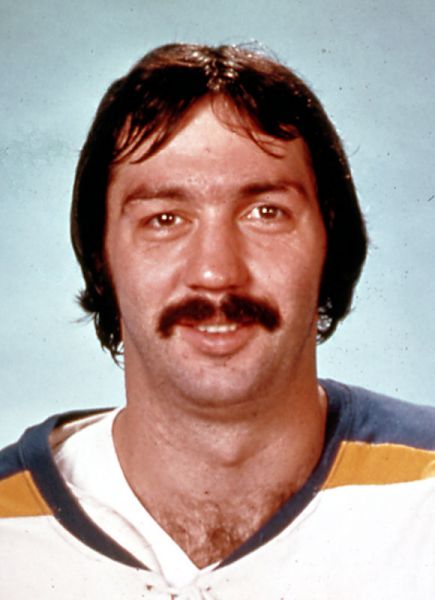
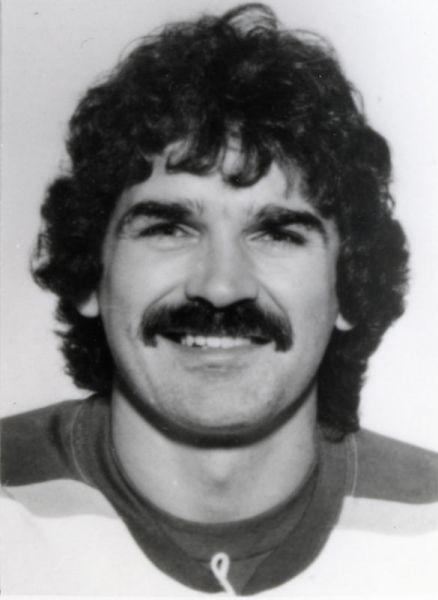
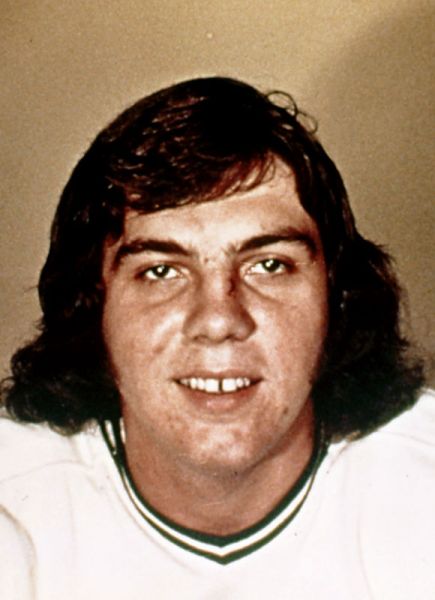
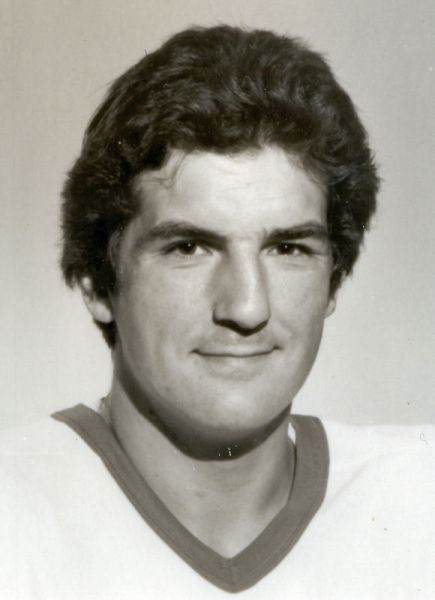


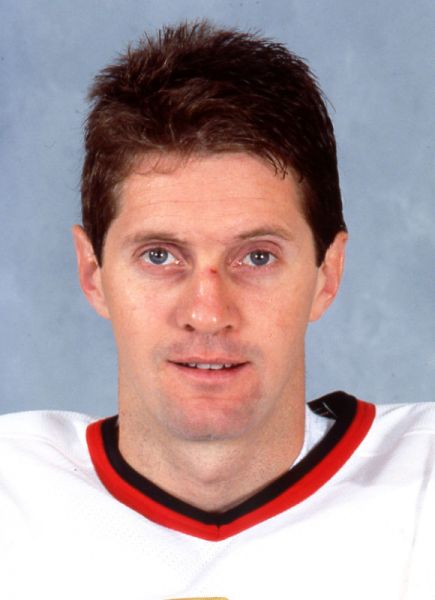



One thought on “Top 10 Worst Vancouver Canucks Trades Ever”